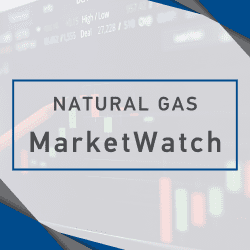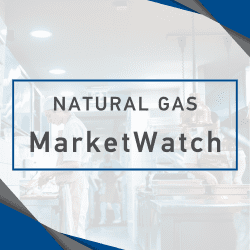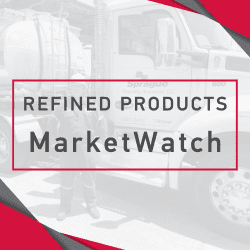Recap: The oil market traded lower after OPEC+ on Sunday agreed to another output increase for September, adding to the market’s concerns of oversupply amid lower demand. OPEC+ agreed to raise production by 547,000 bpd for September, the latest in a series of accelerated output increases. The crude market gapped lower from a low of $67.05 to $66.85 on the opening, which it quickly backfilled. The market traded to a high of $67.74 in overnight trading. However, the market breached a support line at $65.96 and retraced more than 62% of it move from a low of $62.84 to a high of $70.51 as it sold off to a low of $65.46 by mid-morning. The market later retraced some of its losses and traded in a sideways trading range during the remainder of the session. The September WTI contract settled down $1.04 at $66.29 and the October Brent contract settled down 91 cents at $68.76. The product markets ended the session in mixed territory, with the heating oil market settling up 1.77 cents at $2.3176 and the RB market settling down 1.64 cents at $2.1022.
Technical Analysis: The crude market is seen trading sideways as the market weighs the OPEC decision to increase its output in September and the possibility of OPEC+ unwinding a further 1.65 million bpd cut at its next meeting on September 7th against the impact of the latest U.S. tariffs. On Monday, U.S. President Donald Trump stated that he will increase tariffs on India over its purchases of Russian oil. The crude market is seen finding support at its low of $65.46, $65.05, $65.00 and $64.71, $64.38, $64.10 and $63.93. Meanwhile, resistance is seen at $67.74, $69.58, $70.41 and $70.51. Further resistance is seen at $70.96, $73.70 and $75.98.
Fundamental News: On Sunday, OPEC+ agreed to raise oil production by 547,000 bpd for September, the latest in a series of accelerated output hikes to regain market share, as concerns mount over potential supply disruptions linked to Russia. The eight countries are scheduled to meet again on September 7th, when they may consider reinstating another layer of output cuts totaling around 1.65 million bpd. Those cuts are currently in place until the end of next year.
U.S. President Donald Trump said he will substantially increase tariffs on India over its purchases of Russian oil. He did not elaborate on what the tariff would be. Last week, India said he would impose at a 25% tariff on goods imported from India and added that India would also face an unspecified penalty but gave no details. In response, India said that the U.S. and EU “targeting” of the country for importing oil from Russia is “unjustified and unreasonable”.
Trade sources said Indian Oil Corp bought 7 million barrels of crude from the U.S., Canada and the Middle East as U.S. President Donald Trump increased his criticism of the country over its purchases of Russian oil.
Goldman Sachs reiterated its oil price forecast with Brent averaging $64/barrel in the fourth quarter of 2025 and $56/barrel in 2026, but expects an increasing range of risks to its baseline estimates from recent developments. The bank said “Increasing pressure on Russia and Iran sanctioned oil supply poses an upside risk to our price forecast, especially given the faster-than-expected normalization in spare capacity.” However, Goldman flagged a downside risk to its 800,000 bpd average annual demand growth forecast in 2025-2026 due to the increase in U.S. tariff rates, threats of additional secondary tariffs and weak U.S. economic activity data. The weaker data “suggests that the U.S. economy is now growing at a below-potential pace”, which the bank’s economists’ feel has increased the chance of a recession in the next 12 months.
Early Market Call – as of 9:50 AM EDT
WTI – Sep $65.26, down 98 cents
RBOB – Sep $2.0912, down 1.05 cents
HO – Sep $2.2703, down 3.98 cents









